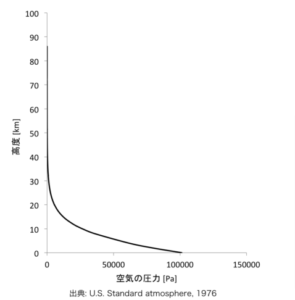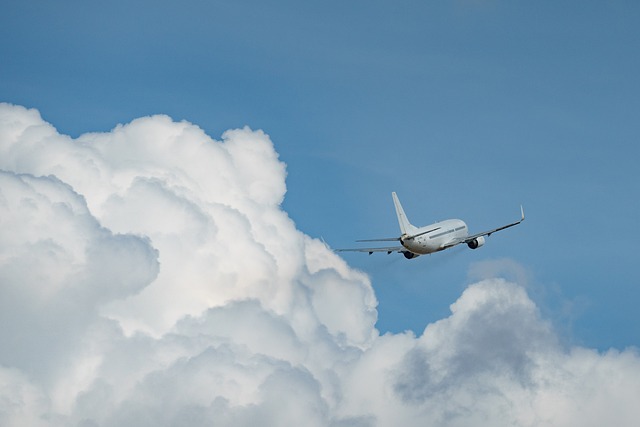Hi, I’m Korosuke, who was hit by the first spring storm early and had a hard time.
Spring is really scary because there are days when the airflow is really bad during takeoff and landing!
The other day I asked an acquaintance, “Why do airplanes fly so high? Can’t they fly low?” I would like to explain this question, including the part that is difficult to convey only by words.
Flight altitude of large aircraft
It is important to know at the outset how high altitude is generally referred to.
It is not well defined in the dictionary or elsewhere, and there are several opinions among pilots, but in general, large aircraft often fly at altitudes above 10,000m (about 30,000ft), and the larger the aircraft, the higher the altitude.
However, Korosuke considers altitudes after 29,000ft or 10,000ft to be high altitude.
This is because after 10,000ft is the altitude where in-flight pressurization is required, and after 29,000ft is RVSM airspace, which is considered to be navigated by a special method.
Incidentally, fighter planes and other aircraft sometimes fly at higher altitudes.
Reasons for flying at high altitude (1)
“It’ll give me better fuel economy.”
First of all, before going into the explanation, it is necessary to know that large aircraft are equipped with engines called jet engines, and simply put, these engines take in air, expand it in the engine, and push it out to the rear to create propulsion to move forward.
Now to the main issue.
As we learned when we were small children, the density of air decreases exponentially as we go up to a certain altitude.
Therefore, air resistance, which is tremendous at low altitudes, becomes smaller at high altitudes.As we learned when we were small children, the density of air decreases exponentially as we go up to a certain altitude.

It stands to reason that if air resistance decreases at higher altitudes, the amount of fuel burned to achieve the same speed at higher altitudes will be smaller.
Reason for flying at high altitude (2)
“Due to air traffic.”
Large aircraft carrying passengers are basically able to fly even in bad weather to some extent under instructions from air traffic controllers, such as the instrument flight system.
At that time, each airport has its own departure route, and due to obstructions and overlaps with the flight paths of other aircraft, there are certain points where the aircraft is required to pass above a certain altitude.
Air routes also have a minimum altitude, called the MEA, to maintain spacing from obstructions and communication with air traffic controllers.
Many routes with high MEAs exceed 20,000 ft.Air routes also have a minimum altitude, called the MEA, to maintain spacing from obstructions and communication with air traffic controllers.
Other small aircraft used by individuals fly at low altitude, and large aircraft rarely bother to fly at low altitude because of the increased traffic, such as the Self-Defense Forces training.
Why not at an even higher altitude?
In conclusion, no.
The main reasons for this are the airplane’s engine performance and the ability to maintain pressurization and lift.
1. reduced engine performance
At higher altitudes, the air density becomes even lower, reducing the amount of air (oxygen) that can be taken into the engine, which in turn reduces the engine’s performance.
2. Limitations of the pressurization function
Although there are differences among aircraft types, the altitude at which cabin pressurization can be maintained is determined for each model, and above that limit, the cabin air pressure drops.
3. maintenance of lift
Airplanes basically fly according to Bernoulli’s theorem, which states that the lift required for an airplane to fly requires a certain amount of speed (pressure).
Less air density means that the pressure of air against the plane is reduced, it must fly at a higher speed.
However, when approaching the speed of sound, a shock wave called the sound barrier occurs, causing resistance to increase all at once.
This is why airplanes cannot fly faster than the speed of sound and too slow to maintain lift and cannot go to higher altitudes.
This last-minute area is called the “COFFIN CORNER“.
The word was mentioned in the movie Top Gun, but I suspect that very few people knew about it.
Summary of reasons why aircraft fly at high altitudes
Korosuke also studied this content when he was in college, so I feel that I have a much better understanding of it now that I can verbalize it myself.
However, pilots do not study aerodynamics that deeply, so if you have any pointers, I would appreciate it.
I feel like I understand it in a surprisingly clear way (laughs).
I hope you will take a look at the other articles I have written on airplanes.
How airplanes are parked straight.



コメント